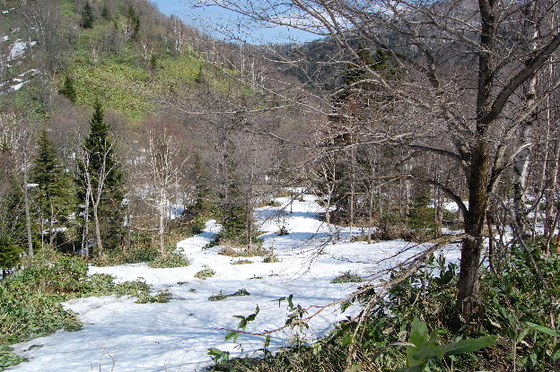Horoka Tomamu Montane Forest is a nature reserve in Hokkaido, the northern island of Japan. It was established in 2010, the United Nations International Year of Biodiversity.
The forest, which is hemiboreal, has a rich, diverse tree canopy, including broadleafs such as alder, ash, birch, cherry, elm, lime (Tilia), magnolia, maple, oak, poplar, rown and willow, together with fir, spruce and yew conifers, above an understory dominated by sasa 'dwarf bamboo'. The woodland had been left untouched since the middle of the last century. There are no man-made plantations and until 2010 there were no paths. In August 2012, it was designated as a forest reserve under Japanese government protection.
Wildlife is abundant with bears, Ezo Sika deer, foxes, tanuki, sables, mountain hares, and three species of squirrel. We have identified ten species of bat, two of which are on the Japanese Red List of threatened and endangered mammals. Birdlife includes hazel grouse, ducks, kites, doves, up to five species of woodpeckers, crows and jays, tits, warblers, thrushes, flycatchers, finches, and buntings. Amphibians and replies are prolific, and a survey in 2015, discovered four species of river fish, including spawning masu salmon. About 250 plants and bryophytes have been identified, including 22 species of deciduous trees.
The reserve is named after the Horoka Tomamu River, one of the headwaters of the Mu River, which rises in the centre of the island and flows southwest to the Pacific Ocean. The centre of the conservation area is the 662 metres (2,172 feet) high Mt Maru ('Round Mountain'), which is surrounded by mountain streams, including the upper Horoka Tomamu River. The lowest part of the land is about 500 metres (1650 feet) above sea level. The extent of the area is currently 50.5 hectares (125 acres).
During the past seven years, we have conducted a series of field surveys in order to learn more about the outstanding biodiversity of the area and understand the complex forest ecosystem. We have studied bats, fish, small mammals (mice, voles and shrews) and vegetation. In the future we hope to look at herpetofauna, insects and fungi.


